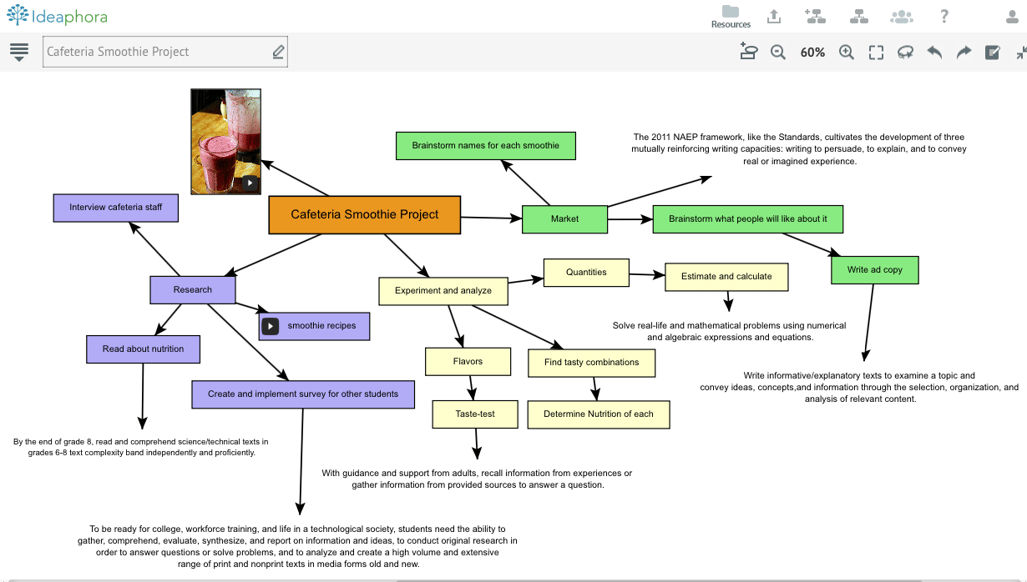In my last post, I covered the importance of satisfying students’ curiosity about why they “have to learn” various skills, facts and processes by connecting curriculum to real world applications. Project-Based Learning (PBL) is one important approach that accomplishes this task and far more.
PBL provides a powerful way to connect curricular areas and demonstrate their usefulness. With an interesting project as the focal point, students use reading, writing, math, science and critical thinking to address a real word need. It can be as simple as creating a healthy smoothie recipe to encourage others to enjoy rather than discard fruits and vegetables served in the cafeteria. This small, short-term project would connect reading about nutrition, researching available products, estimating and measuring, and writing “marketing” text.
A more complex project might be the design of a theme park for their local area. Students might begin by researching their region for possible themes—historical, geologic, environmental, etc. The design of theme park rides and park layout would include geometry, physics, art and even psychology. Students could also write design specs for proposed builders and “storyboard” the ride experience, use Google Earth to find appropriate open space and map out traffic patterns and parking, and write an environmental impact statement.
The possibilities are endless and you can see many inspirational examples and useful resources at the Buck Institute for Education. They’ll get you and your students excited.
As you can imagine, the planning part of PBL is the most difficult, and much of this you’ll have to do on your own or, hopefully, with an interested colleague. One of the most essential planning steps is mapping the content.
Content mapping will help you document exactly how your project addresses standards and content areas aside from those in the Common Core. You might even add 21st Century Skills or National Assessment of Educational Progress (NAEP) frameworks. The important thing is to be able to explain to parents and other educators how your project represents real, rigorous learning. If, as suggested in the last post, your students have experience in analyzing standards, they can also map the lesson using Ideaphora.

You may be able to add more documentation as the project proceeds, but it’s reassuring when trying something new to know and be able to show how you’re being an effective educator.
Next time, we’ll explore developing the “essential question” your project will address.
In the meantime, learn more about Ideaphora Classroom and practice using it with your students. Enroll in the free Ideaphora Classroom pilot program.

